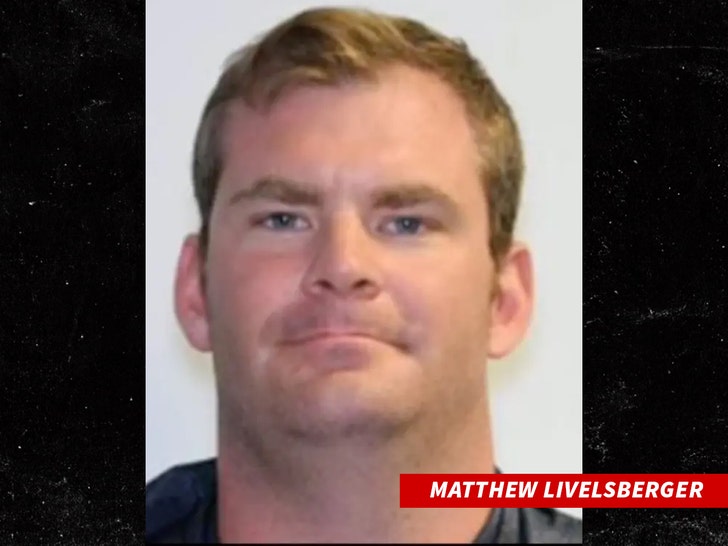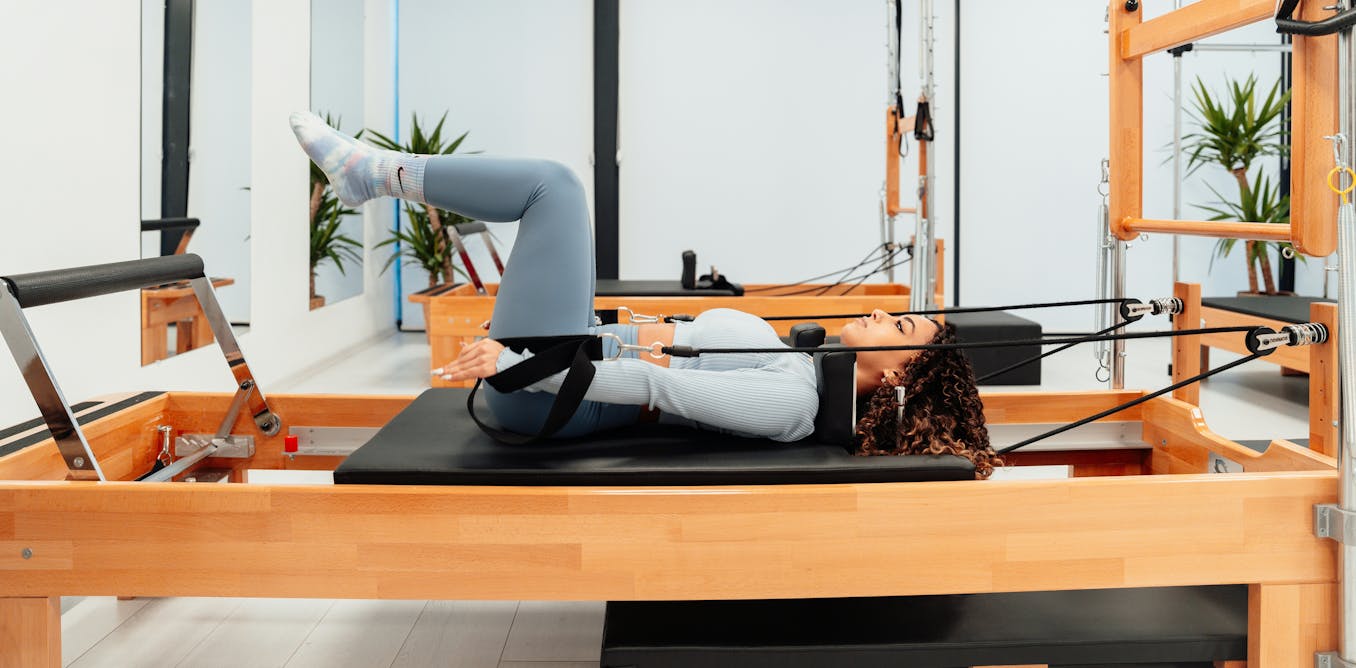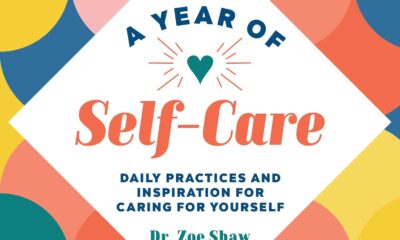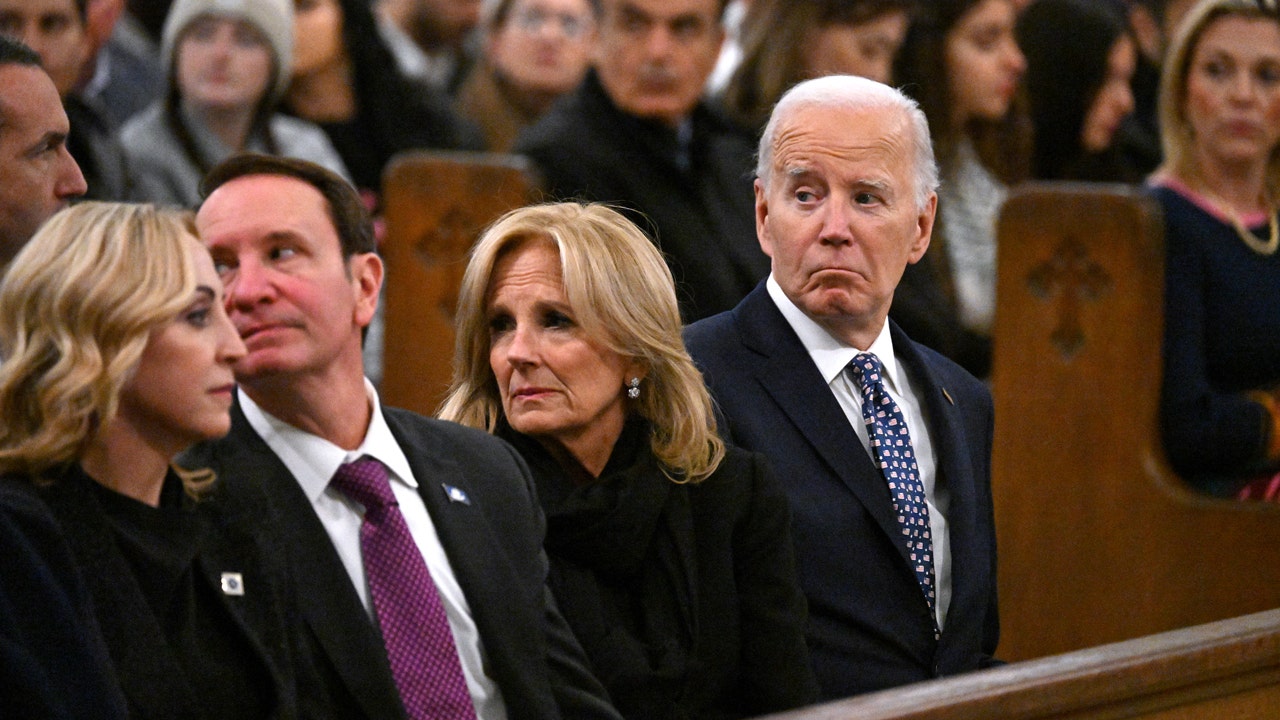Lifestyle
New Video Shows Cybertruck Explosion At Trump Hotel in Vegas

Police are giving us a new look at the Cybertruck that exploded and burst into flames outside the Trump Hotel in Las Vegas last week.
Las Vegas Metropolitan Police have released new video that shows Army Special Forces soldier Matthew Livelsberger‘s Tesla Cybertruck bursting into flames outside the hotel on the Vegas strip on New Year’s Day.
CNN releases new camera angle of the Trump hotel truck explosion.
Investigators say Matt Livelsberger was found with two firearms, a handgun and a rifle. The weapons were purchased legally on Monday. (ABC News)
Livelsberger allegedly shot himself in the head. A .50-caliber… pic.twitter.com/r6nBu45qys
— Collin Rugg (@CollinRugg) January 5, 2025
@CollinRugg
The new video shows another angle as explosives were detonated inside the vehicle causing the truck to explode and burst into flames while Livelsberger sat in the front seat. Officials say he put one of his guns in his mouth, with the shot coming out the left side of his head prior to the explosion.
As we reported … The Clark County Nevada Sheriff’s Dept. released a portion of a letter Livelsberger wrote, saying … “This was not a terrorist attack, it was a wake up call. Americans only pay attention to spectacles and violence. What better way to get my point across than a stunt with fireworks and explosives?”

He went on to say … “Why did I personally do it now? I needed to cleanse my mind of the brothers I’ve lost and relieve myself of the burden of the lives I took.”
Livelsberger, who was said to be a Donald Trump supporter, wrote … “Fellow service members, Veterans and all Americans, TIME TO WAKE UP! We are being led by weak and feckless leadership who only serve to enrich themselves.”
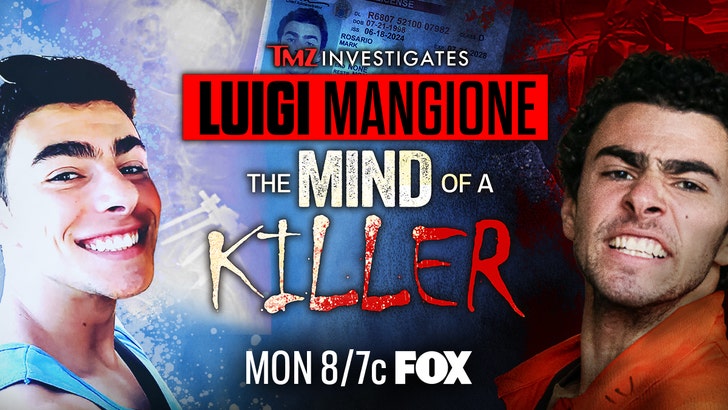
Livelsberger was a Green Beret in the Army and served in Afghanistan and Central Asia.

Lifestyle
Don’t Call It a Gym. It’s a Sporting Club.

When the five-star Gleneagles Hotel in Scotland set out to design a fitness center that would appeal to its next generation of guests, its designers didn’t look to the future. Instead, they turned to the past — specifically, a Slim Aarons photograph titled “Tennis in the Bahamas, 1957.” The result is the Gleneagles Sporting Club, a retro, luxurious sports facility with ample courts, equestrian stables and a courtside lounge space.
Inspired by the iconic tennis and sporting clubs of the late 1800s and mid-1900s, spaces that were meant just as much for socializing as they were for exercise, the Gleneagles Sporting Club is part of a new wave of fitness centers that combine aspects of members clubs and gymnasiums under one roof.
Playing on the nostalgia for country clubs and Ivy League-coded preppiness, these athletic spaces are sharply veering away from the sleek aesthetics pioneered by fitness chains like Equinox.
For some, the shift is as subtle as a font change and some new merchandise. Last month, Blink Fitness, a budget gym chain, released a sweatshirt with 1980s-style script and “club” added to the end of its name. Others have gone further, building entire brands meant to evoke a vintage feel and even investing in period-era equipment.
“I wanted to bring in the spirit of the old gymnasiums, because I loved the type of equipment that they had and their focus on the actual design and how intricate it was,” said Lev Glazman, a co-founder of the Maker Gymnasium, a 2,700-square-foot gym attached to the Maker Hotel in Hudson, N.Y.
The gym opened in 2020 with a cork checkerboard floor and European gym equipment from 1920s and ’30s, including a pommel horse and circus rings from Austria.
“When you bring historical elements to a space and there’s an element of curiosity, it makes your experience so much better,” he said. “All of our customers who come to the gym say, ‘I feel like I’m in such a different place.’”
The more recent past has been a source of inspiration for other athletic club owners, as films like “Challengers” and “King Richard” have spurred a renewed interest in tennis and other racket sports.
“We wanted Reserve to be simple, elegant, luxurious clubs that would be the foundation for growth of padel in the U.S.,” said Wayne Boich, the founder of Reserve Padel, referring to the racket sport that is a blend of squash and tennis and is taking off in New York City.
A former college tennis player, he looked to the legacy of racket sports and to the tennis clubs of his childhood in the 1980s to develop the ethos for his venture.
“The Reserve green is a bit of a homage to the Wimbledon look and feel,” he said.
The trend extends beyond the East Coast. In Nashville, Forza Pilates Athletic Co. has a crest and green and navy heritage-inspired merchandise.
“My inspiration for the branding was country clubs, tennis clubs and racket clubs,” said Sydney Dumler, the founder of Forza. “It felt more timeless to me than just leaning into the Pilates aesthetic,” which tends to be more minimalist. She added she was also tired of the “industrial vibe.”
Emily Oberg, the founder of the brand Sporty & Rich, was an early purveyor of this aesthetic resurgence. In 2014, she started an Instagram account where she curated an aspirational moodboard of vintage sport and style imagery. It later grew to include a print magazine and a multimillion-dollar lifestyle and clothing brand with a SoHo flagship store.
“The brand is very much rooted in this aesthetic of country clubs and ’80s sports clubs and gyms,” said Ms. Oberg, noting that the New York Health and Racquet Club, which was founded in 1973, inspired her logo.
She said the nostalgia Sporty & Rich tapped into seemed to be about more than just interior design.
“Over the past 15 to 20 years, gyms have become solely focused on the fitness aspect, rather than the cultural or social aspect they used to have,” she said. “I think there’s a specific culture around them that we’ve lost.”
It is that culture and sense of belonging that this new crop of athletic clubs is hoping to recreate.
“As there is more awareness of the epidemic of loneliness, and especially as we emerge from the pandemic, there’s certainly an emphasis on socializing and coming together in embodied, real ways with other people,” said Natalia Mehlman Petrzela, a professor of history at the New School and the author of “Fit Nation: The Gains and Pains of America’s Exercise Obsession.”
Reserve Padel, Mr. Boich said, has made some strides in creating more of a social space. “People want to come here and hang out,” he added.
The current generation of sports clubs is hardly inexpensive — monthly memberships at Forza run from $140 to $440 per month, a month at Maker Gymnasium costs $140, and Reserve memberships start at $500 at the Hudson Yards location. But with drop-in options and open camps, some have tried to move away from the members-only exclusivity that was once standard.
“The democratization of luxury experiences is something we’ve seen in the consumer marketplace for the last couple of decades,” Ms. Mehlman Petrzela said. “Uber gave you your own private driver. Now, you can join a country club without the $100,000 initiation fee or going through a super complicated board of approval.”
The recent makeover for gyms may also owe to the simple idea that after years of the same look, people are ready to see something else.
“People want to get away from something that is standard,” said Mr. Glazman, the co-founder of Maker Gymnasium. “Particularly in gyms, I think there’s definitely going to be more movement to create environments that are more interesting and not just about functionality.”
Lifestyle
L.A.'s most intimate theater experience? You're the only guest at this thrilling show
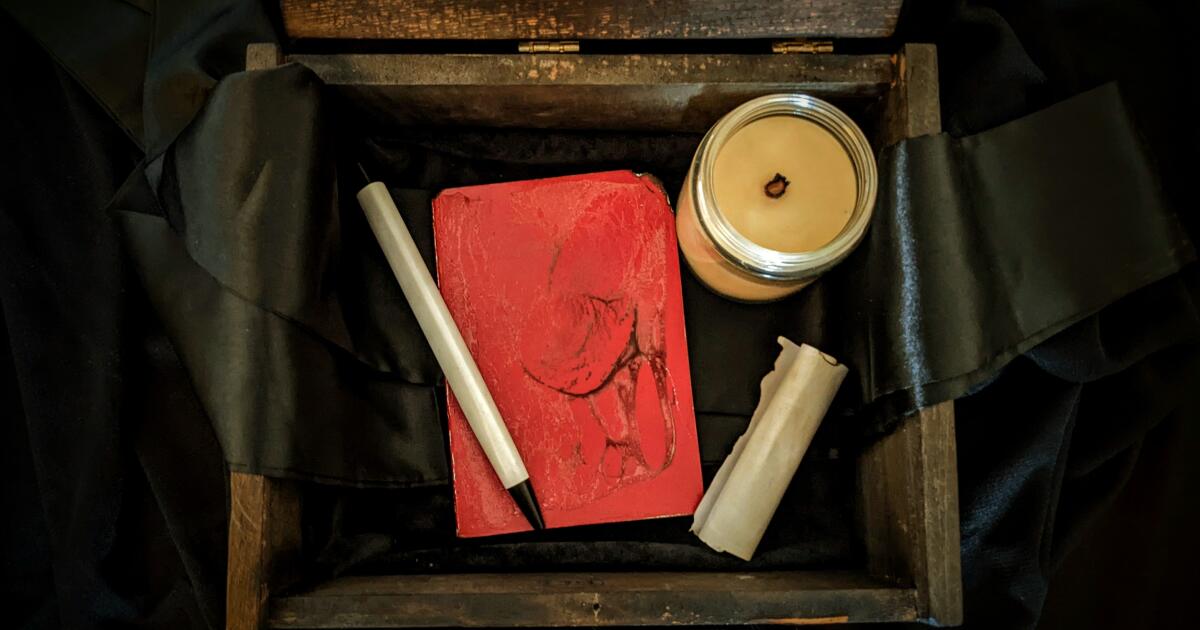
Last summer I had a chance to strike a deal with the devil.
I sat, contemplating my choice — what I could live without to acquire the one thing I most desired. This was no arbitrary crossroads. Over the past 40 or so minutes I had confessed long-held goals and romantic yearnings while revealing details of my most intimate relationships. They were now being weighed against me. All, I was told, could be mine, minus what I would sacrifice. The contract would be binding, necessitating a drop of blood.
I was left alone, a tiny lancet sitting before me. The barely audible cackle of candle kept me company in a stark warehouse room, a setting that felt illicit while the small flame’s fragility reminded me that I needed to make a decision.
I was here because I had booked a session with Yannick Trapman-O’Brien’s “Undersigned,” a show he bills as a “psychological thriller for one.” Each production is personal, and highly individualized to its participant — plot points detailed here may not unveil for every guest. Know, however, there is no talk of dooming oneself to a fantastical afterlife. “Undersigned” is grounded in our reality, a conversation we have over our wants and needs, and, at least for me, what aspects of my personality or social circle I would forgo to achieve them. Love and various relationships were on the table as I fiddled with the lancet and considered puncturing my finger.
This was not a decision I would make lightly. Trapman-O’Brien’s performance, after all, had created an atmosphere of damning seriousness. And I hadn’t even seen him.
For most of the show I was blindfolded as he sat across from me, and he had left the space while I raced through my life and the future I was starting to imagine for myself. It’s rare to partake in “Undersigned” — after bringing it to L.A. last August, when I experienced it, Philadelphia-based Trapman-O’Brien is back with a smattering of dates this month. Limited tickets, at the time of writing, remain.
Despite being comfortable with vulnerability and having a tendency at times to overshare, I went in to “Undersigned” with trepidation. No topic, unless specifically requested, is off limits. Our relationship to money, sex, religion, love, power and more are all fair game, and the subjects are discussed in a setting that nods to the occult. Yet “Undersigned” ultimately became something akin to a therapy session, as I was prompted to analyze my strengths and weaknesses in matters of romance and faith.
Trapman-O’Brien, 32, has a unique ability to improvise, to quickly twist my words and use them against me. There were no cards or magic tricks here. “Undersigned” is purely a meeting of the minds, and those who treat it seriously will find it most revealing.
My session was a tug-of-war between empathetic and selfish tendencies; I wanted no deal, I said, unless all those potentially affected were happy, but such a request necessitated taking a figurative scalpel to other areas of contentment. Thus it became a work of self-examination. If rewriting history and one’s life were possible, how much could I accept while still looking at myself in the mirror?
Only everything started to become twisted. I had gone in expecting to share some of my professional and romantic dreams. As the show progressed, however, a fear that I would never achieve them set in.
“There is an enormous act of care in providing people a place where they can be confronted by themselves,” Trapman-O’Brien says. “For all that the themes and origins of this story are rooted in traditions and in things that are bad and sinister, I actually find it to be an incredibly affirming piece to do. I am gobsmacked by people’s generosity, and courage to stare down a scary thing. I’ve had people say something and then immediately say, ‘Oh, I don’t like that that’s true.’”
Trapman-O’Brien is careful with his words. A promise of “Undersigned” is that what is spoken of during the performance will never again be discussed. He will reveal, only broadly, the topics that have been broached. A veteran of the East Coast participatory theater scene, Trapman-O’Brien’s prior show, “The Telelibrary,” was born out of the COVID-19 pandemic, a whimsical yet open-hearted telephone-based performance in which vocal prompts led us either to literary reflections or to recollections left behind by other callers.
“Undersigned” started in 2019 as a commission for a patron’s Halloween party. Trapman-O’Brien balked, not wanting to create a horror-themed show, but then became intrigued by exploring the concept of making a deal with the devil. “Undersigned” only works because the choices don’t feel like an arbitrary thought experiment; that is, it’s not a game of accepting, say, untold billions by giving up a pet or a limb. Throughout, the blindfolded conversation with Trapman-O’Brien dials in on our emotional wants and needs, and then needles away at them in search of their root.
Yannick Trapman-O’Brien has performed “Undersigned” about 300 times, each time asking guests to potentially offer up a personal and emotional sacrifice. The abstracted bargains of past guests are on display for participants.
(Todd Martens / Los Angeles Times)
The goal? To emotionally disarm guests by creating, in Trapman-O’Brien’s words, a “nonjudgmental space.”
“One of the problems is the second you open up the idea of a deal with the devil, people expect that they’re going to get screwed,” Trapman-O’Brien says. “I find people negotiate against themselves. One of the most impactful things of the piece is talking to people about why they keep accepting less than they want. Like, ‘I don’t need my dream job. I just need a good job.’ But I told you that you could have anything you want. Have your dream.”
The vulnerability inherent in the show extends to its payment structure. An “Undersigned” performance asks for a “down payment” of $100, with slightly cheaper options for students and creative professionals. At the end of the show, guests are presented with a notebook to write something personal to leave behind for others to read, and an envelope containing 30% of their initial investment in cash — a recognition, reads “Undersigned’s” fine print, of “the gamble” guests are taking with such an openly revealing, potentially unnerving show.
“I think the best way to ask for something is to invite,” Trapman-O’Brien says. “And the best way to invite people into vulnerability is with vulnerability of your own. We’ve talked about how heavy the show is. And I believe a big part of what makes people willing to share is that I try to find as many places as possible to stick my neck out. “
Trapman-O’Brien says he regularly hears from those who participate, sometimes months later, with updates on their agreement. For me, I sat in the warehouse’s lobby — the show is run out of Hatch Escapes in Arlington Heights — for a good 45 to 50 minutes, contemplating how easily I was willing to offer up professional ambitions and personal connections for something I believed would make me happy.
“There’s a non-zero number of participants,” Trapman-O’Brien says, “who will reach out and say, ‘I know I’m not supposed to discuss it, but it did happen.’ Well, those rules are about your safety and mine, so I can say, ‘I don’t know what you’re talking about.’ But that to me is what it means to do a piece in which you say things that you need. Some of them might surprise you.”
Arguably, the biggest revelation for me with “Undersigned” is how true it all felt. About six months after I partook in the production, there are moments I’ll catch myself thinking about the show and the choice I was presented with. Should that future I imagined for myself ever become a reality, a not insignificant part of me will wonder what other forces were at play.
For when I departed “Undersigned,” I also left a part of me behind: a drop of blood, and a signed deal with the devil.
Lifestyle
Portraits of the Golden Globe Winners, From Backstage

The Los Angeles-based photographer Chantal Anderson was backstage at the Beverly Hilton Hotel on Sunday, where she photographed Golden Globes winners for The Times.
Best Performance by an Actress in a Motion Picture, Musical or Comedy
Demi Moore, “The Substance”
“I had a woman say to me, ‘Just know you will never be enough, but you can know the value of your worth if you just put down the measuring stick.’ And so today I celebrate this as a marker of my wholeness and of the love that is driving me, and for the gift of doing something I love.” — Demi Moore in her acceptance speech.
Best Performance by an Actor in a Motion Picture, Musical or Comedy
Sebastian Stan, “A Different Man”
“Our ignorance and discomfort around disability and disfigurement has to end now.” — Sebastian Stan in his acceptance speech.
Best Television Series, Drama
“Shogun”
Best Motion Picture, Non-English Language and Best Motion Picture, Musical or Comedy
“Emilia Pérez”
“In these troubled times, I hope ‘Emilia Pérez’ will be a beacon of light.” — Director and writer Jacques Audiard in one of his acceptance speeches about “Emilia Pérez.”
Best Performance by AN ACTRESS in a TELEVISION Supporting Role
Jessica Gunning, “Baby Reindeer”
“‘Baby Reindeer’ has changed my life in ways I can’t even explain, so thank you for everything. I can’t believe this is happening to me, and I know that 8-year-old me wouldn’t, either.” — Jessica Gunning in her acceptance speech.
Best Performance by AN ACTRESS in a Television Series, Drama
Anna Sawai, “Shogun”
“Thank you to the voters for voting for me — even though I would vote for Kathy Bates any day.” — Anna Sawai in her acceptance speech.
Best Performance by an Actor in a Motion Picture, Drama
Adrien Brody, “The Brutalist”
Best Performance by an Actress in a Motion Picture, Drama
Fernanda Torres, “I’m Still Here”
Best Motion Picture, Animated
“Flow”
“This is the first time a film from Latvia has been here, so this is huge for us.” — Gints Zilbalodis, the director of “Flow,” in his acceptance speech.
Best Screenplay, Motion Picture
Peter Straughan, “Conclave”
Best Performance by an Actor In A Television Series, Drama
Hiroyuki Sanada, “Shogun”
“I’d like to say, for the young actors and creators in the world: Please be yourself, believe yourself, and never give up. Good luck.” — Hiroyuki Sanada in his acceptance speech.
Best Performance by AN Actor in a Television Supporting Role
Tadanobu Asano, “Shogun”
“So maybe you don’t know me: I’m an actor from Japan. My name is Tadanobu Asano. Wow!” — Tadanobu Asano in his acceptance speech.
Best Performance by an Actress in a Supporting Role in any Motion Picture
Zoe Saldaña, “Emilia Pérez”
Best Limited Series, Anthology Series or A Motion Picture Made for Television
“Baby Reindeer”
“A lot of people sometimes ask me why ‘Baby Reindeer,’ why a show this dark, has gone on to be the success that it’s had, and I think, in a lot of ways, people were crying out for something that kind of spoke to kind of the painful inconsistencies of being human.” — Richard Gadd, creator and star of “Baby Reindeer,” in his acceptance speech.
Cinematic and Box Office Achievement
“Wicked”
“My parents came to this country and loved ‘The Wizard of Oz.’ They told us about the yellow brick road and the rainbow, a place over the rainbow, all your dreams come true if you dare to dream it. So when I’m up here looking at you, living the dream and looking at this beautiful, beautiful cast — it is more beautiful than I ever thought it could be.” — Jon M. Chu, the director of “Wicked,” in his acceptance speech
-

 Health1 week ago
Health1 week agoNew Year life lessons from country star: 'Never forget where you came from'
-
/cdn.vox-cdn.com/uploads/chorus_asset/file/24982514/Quest_3_dock.jpg)
/cdn.vox-cdn.com/uploads/chorus_asset/file/24982514/Quest_3_dock.jpg) Technology1 week ago
Technology1 week agoMeta’s ‘software update issue’ has been breaking Quest headsets for weeks
-

 Business6 days ago
Business6 days agoThese are the top 7 issues facing the struggling restaurant industry in 2025
-

 Culture6 days ago
Culture6 days agoThe 25 worst losses in college football history, including Baylor’s 2024 entry at Colorado
-

 Sports6 days ago
Sports6 days agoThe top out-of-contract players available as free transfers: Kimmich, De Bruyne, Van Dijk…
-

 Politics4 days ago
Politics4 days agoNew Orleans attacker had 'remote detonator' for explosives in French Quarter, Biden says
-

 Politics4 days ago
Politics4 days agoCarter's judicial picks reshaped the federal bench across the country
-

 Politics2 days ago
Politics2 days agoWho Are the Recipients of the Presidential Medal of Freedom?
